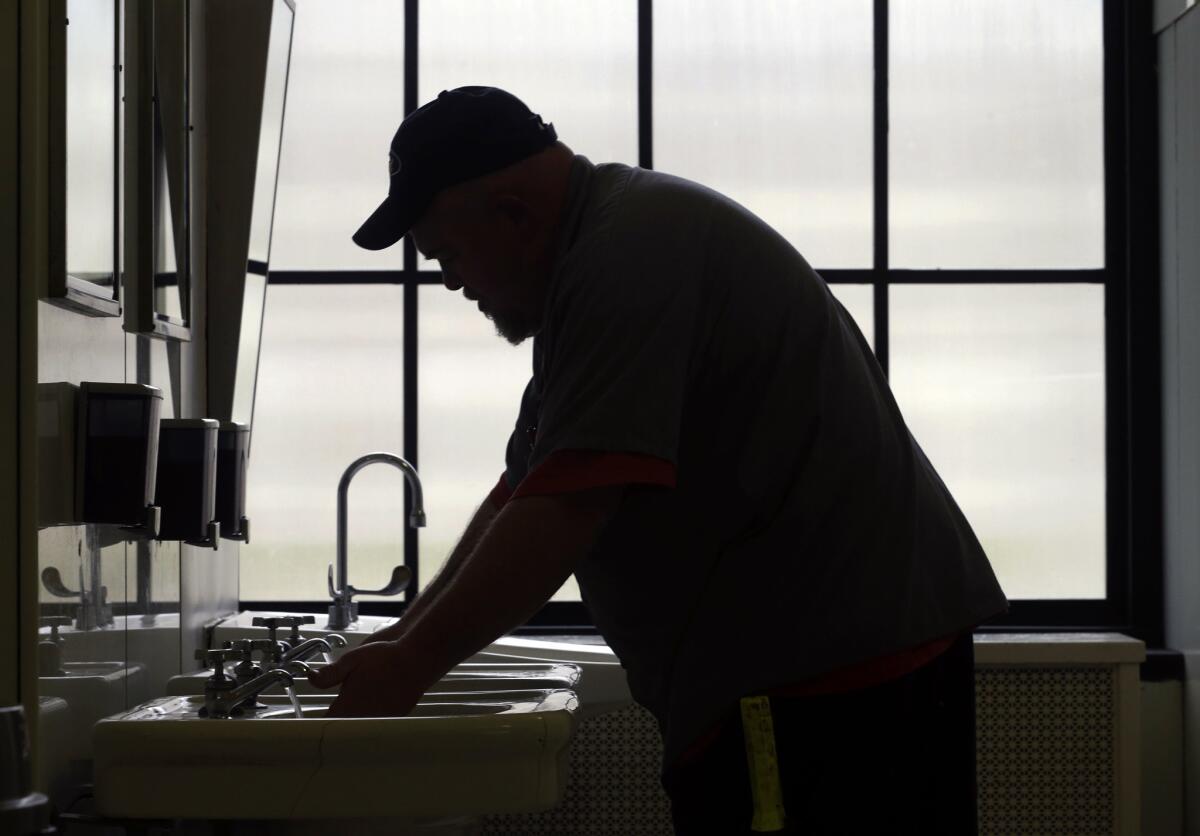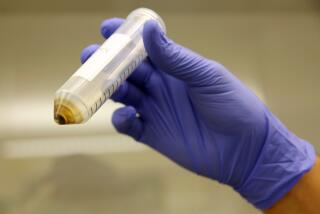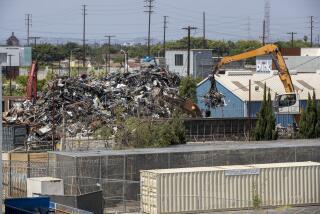Water declared safe to drink in more areas of West Virginia

Ashlee Keeney can’t pinpoint what the water in her house smells like, but she says some liken it to licorice.
“There’s a distinct smell,” she told the Los Angeles Times. “It’s a strong odor but it’s hard to put a finger on what it is actually.”
The Charleston, W.Va., resident was among those who got their water back on Monday, a little under a week after a chemical spill in West Virginia left 300,000 people without usable water.
Officials, who put a tap-water ban into place after about 7,500 gallons of 4-methylcyclohexane methanol, or MCHM, leaked into Elk River last week, announced that the “do not use” water advisory had been lifted in parts of the state, including where Keeney lives.
As of Tuesday afternoon, about 39,000 people, in areas such as Southside, Southridge and George Washington near the state capital, Charleston, were cleared to use their tap water, according to a news release from the utility West Virginia American Water.
“An interagency team including the W.Va. Bureau for Public Health, West Virginia American Water and U.S. Army Corps of Engineers announced that extensive testing produced results showing that levels of MCHM are below 1 part per million,” according to the utility.
Gov. Earl Ray Tomblin said in an email release that more than one-third of the affected customers have safe water and have been asked to begin the flushing process.
However, “the ‘do not use’ order remains in place for other areas,” he wrote. “I ask residents in these areas to be patient and refrain from beginning the flushing process.”
Though Keeney followed the state’s recommended flushing procedures, she said she’s still skeptical about using her water and will continue to drive to a relative’s house about an hour away to shower and do her laundry.
The West Virginia American Water company advises customers to flush out all hot water taps for 15 minutes, all cold water taps for five minutes and then all remaining faucets and appliances.
“Any lingering smell, which is expected, is not a health issue,” the company wrote on its “How to Flush Your Plumbing System” guide.
The 26-year-old Keeney posted a picture of the bathtub of a friend, also a Charleston resident, filled with brownish water, as an example of how the state is rushing the cleanup process.
“I think they are in a rush to get the water to what they think is up to par, but I just still don’t think it’s OK for us to drink or bathe in,” she said.
West Virginia American Water is continuing to update each area’s status through an interactive map on its website and a temporary hot line.
Health Department officials, meanwhile, are reinspecting businesses that closed because of the order.
“We realize these businesses are the economic engines that drive our economy,” said Dr. Rahul Gupta, executive director of the Kanawha-Charleston Health Department, in a statement posted on the department’s website. “We want to work with them so they are able to reopen as soon as possible.”
The majority of public schools in the district still remain closed, however. According to the West Virginia Department of Education website, all schools in Boone, Kanawha, Lincoln and Putnam counties are closed because of the water crisis. Only some schools in Fayette County are open.
Tomblin said getting students “back into safe and healthy classrooms” is one of his top priorities.
“Reopening will be determined on a county-to-county basis and will require that specific protocols be met,” he said. “The Department of Education is working with the local county emergency and health agencies, along with the National Guard, to ensure our schools are properly flushed and cleaned before students return to the classroom.”
On Monday, officials in Kentucky and Ohio reportedly were preparing for the arrival of the chemical plume drifting toward them.
Using the hashtag #WVWaterCrisis, many took to Twitter to either lament their lack of water or rejoice over its return. Officials also used social media to update customers.
Thank you Lord, we have useable water again! #WVWaterCrisis— LisaWyatt (@oogiewyatt) January 14, 2014
Thirsty Games Day 6 #WVWaterCrisis #wvchemleak— mary (@marywv) January 14, 2014
Just another tap water-free dinner here in zone 6. Still leery after flushing. #WVWaterCrisis #wvchemleak pic.twitter.com/S8MZwbRUUq— Matthew A. Browning (@mattbrowning) January 14, 2014
@iwasaround Here’s a pic from my friends house after the “flushing” process. They’re telling ppl it’s okay! pic.twitter.com/9mNAJBT6JE— Ashlee Keeney (@ashmarkee) January 14, 2014
KCHD is developing plans to reopen establishments as fast as possible once flushed and cleared by the water co.— Rahul Gupta, MD (@kchdmd) January 13, 2014
To view WV American Water’s “How to Flush Your Plumbling System” guidelines visit: https://t.co/7nb0EikE0A. Questions, call 1-800-685-8660.— Governor Tomblin (@GovTomblin) January 14, 2014
ALSO:
Supreme Court throws out overseas human rights case
Roswell shooting: 2 children critical; fellow student is in custody
Retired police captain held in Florida shooting; texting sparked spat
Twitter: @saba_h
More to Read
Start your day right
Sign up for Essential California for news, features and recommendations from the L.A. Times and beyond in your inbox six days a week.
You may occasionally receive promotional content from the Los Angeles Times.







